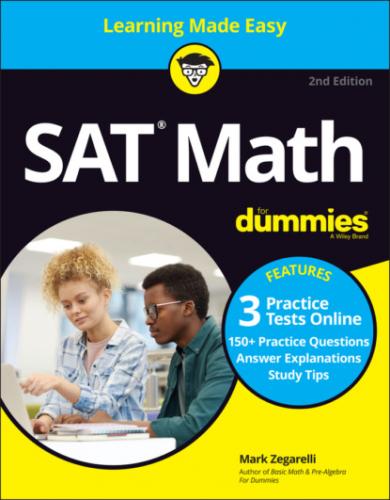You also get access to three full-length online practice tests. To gain access to the online practice, all you have to do is register. Just follow these simple steps:
1 Register your book or ebook at Dummies.com to get your PIN (go to www.dummies.com/go/getaccess).
2 Select your product from the drop-down list on that page.
3 Follow the prompts to validate your product, and then check your email for a confirmation message that includes your PIN and instructions for logging in.
If you do not receive this email within two hours, please check your spam folder before contacting the Technical Support website at http://support.wiley.com or by phone at 877-762-2974.
Now you’re ready to go! You can come back to the practice material as often as you want — simply log on with the username and password you created during your initial login. No need to enter the access code a second time.
Your registration is good for one year from the day you activate your PIN.
Where to Go from Here
This book is organized so that you can safely jump around and dip into every chapter in whatever order you like. You can strengthen skills you feel confident in or work on those that need some attention.
If this is your first introduction to SAT math, I strongly recommend that you start out by reading Chapter 1. There, you find some simple but vital SAT-specific information that you need to know before you sit down with pencil in hand to take the test.
If you’d like to start out by getting a sense of how ready you are for the SAT, skip forward to Chapter 16 and take a practice test. When you’re done, check out Chapter 17 to see how many questions you got correct, and to read through the answer explanation for every question you got wrong.
However, if it’s been a while since you’ve taken a math course, read Chapter 2, which covers the pre-algebra math-skills you need to know before you proceed to the more difficult math later in the book. Chapters 3 and 4, which cover algebra expressions and equations, can get your math brain moving again, and you may find that a lot of this stuff looks familiar as you go along.
Finally, if you read through a few chapters and feel that the book is moving more quickly than you’d like, go ahead and pick up my earlier book, Basic Math & Pre-Algebra For Dummies (John Wiley & Sons). There, I adopt a more leisurely pace and spend more time filling in any gaps in understanding you may find along the way.
Part 1
Getting Started with SAT Math
IN THIS PART …
Knowing SAT basics, including strategies for maximizing your score
Reviewing important pre-algebra concepts you may have forgotten
Chapter 1
Welcome to SAT Math
IN THIS CHAPTER
SAT math — what joy, what utter bliss!
Well, all right — back on Earth, you probably have some work to do before you reach this stage. I promise to do everything in my power to make your study time as painless and productive as possible. All I ask is that you trust in yourself: You already know more than you think you do.
If you’ve taken (or are currently taking) algebra in school, much of this book may seem like review. The task at hand is to focus your work on the skills you need to get the best SAT score you can. So in this chapter, I give you a basic overview of SAT math, including scoring, calculator use, and how to enter gridded-response questions into the grid.
I also give you a bit of essential SAT math strategy that every student needs to know. I encourage you to think about your goal for the next SAT based on the level you’re currently working at.
Finally, I present three SAT success stories, in which three very different students who set and reached different SAT goals got into the colleges that they were aiming for.
SAT Math Basics
The SAT is a college readiness test and, in some U.S. states, is now being used as a skills test for high school graduation. It covers two main subject areas: English and math. Each subject area is scored on a 200-to-800 point scale, resulting in a composite SAT score from 400 to 1,600 points. (If you have any older sisters or brothers who took the SAT before 2016, they may recall that the test used to be scored on a 600- to 2,400-point scale, but that’s all history now.)
Here’s an overview of the two math sections of the current SAT.
A 25-minute No Calculator section containing the following:15 multiple-choice questions, which require you to choose the right answer from among four choices, (A) through (D)5 gridded-response questions (also called student-produced response questions), which require you to record your answer in a special grid
A 55-minute Calculator section containing the following:30 multiple-choice questions8 gridded-response questions
That’s a total of 58 questions, each of which counts for 1 point on your raw score of correct answers (from 0 to 58). This raw score is converted to a scaled score (from 200 to 800), which becomes your SAT math score.
Using the Reference list of formulas
Every SAT math section (No Calculator and Calculator) includes a handy Reference list of formulas that you can use while taking the test, as shown in Figure 1-1. As you can see, this list includes a variety of geometric formulas for the area and circumference of a circle, the area of a rectangle and triangle, the Pythagorean Theorem, and other favorites.
